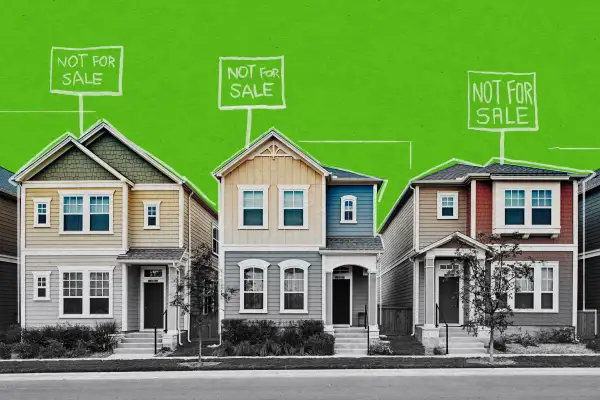How Rising Mortgage Rates Explain the Extreme Shortage of Homes for Sale

After two years of explosive growth, the housing market is still red-hot. Prices are surging and homes are selling six days faster than they were a year ago.
All that points to a perfect seller’s market, but inventory is still incredibly low. Data from the National Association of Realtors shows that there was a 2 month supply of homes for sale in February — significantly lower than the benchmark of 6 months that experts consider a sign of a “healthy” housing market. So what’s going on?
One answer is rising mortgage rates. The average rate on a 30-year fixed-rate loan hit 5% last week. That figure has risen from a little over 3% at the beginning of the year, as the Federal Reserve pulls back its support for the economy to stave off sky-high inflation.
Roughly 90% of the 53.3 million mortgages in the United States now have an interest rate below 5%, according to mortgage technology and data provider Black Knight. Just 2% of mortgages have interest rates of 6% or higher (a good benchmark to use if you’re trying to decide whether to refinance at current rates).
Rock-bottom rates in 2020 and 2021 prompted a huge surge in refinancing as homeowners rushed to reduce their monthly payments. There were as many as 20 million high-quality refinance candidates in 2020, according to Black Knight. As of last week, there were just 1.3 million. The refinance boom is a key reason why so many homeowners have such attractive rates right now.
For all those homeowners who already have mortgages below current rates, it doesn’t make much sense to sell only to need to take out a loan that’s way more expensive. This is especially true given that home prices have risen some 20% over the past year (or even more in some cities) and are expected to climb even higher in the coming months. Why pay more for a house and lock into a more expensive mortgage unless you absolutely need to?
In a report last week, Redfin chief economist Daryl Fairweather said she expects high mortgage rates and high prices to start pushing potential buyers out of the market — but it’s not just buyers stepping away.
“Unfortunately,” Fairweather added, “homeowners are turning their back on the market too. Instead of being motivated to list before prices weaken, potential home sellers may be choosing to wait-out the impending market cooldown.”
If potential sellers choose to wait out higher rates and delay selling, that will squeeze inventory even further and it could drive prices even higher — at least in the short term.
“Not only is it difficult to sell your home knowing that you're going to be paying much more in interest on the new mortgage, but it's also challenging to find a home right now in a lot of places,” says Robert Heck, VP of Mortgage at online mortgage marketplace Morty. “That's a double edged sword that requires a lot more planning from somebody who's looking to sell.”
More from Money:
The Overlooked Reason It's So Hard to Buy a Home Right Now

